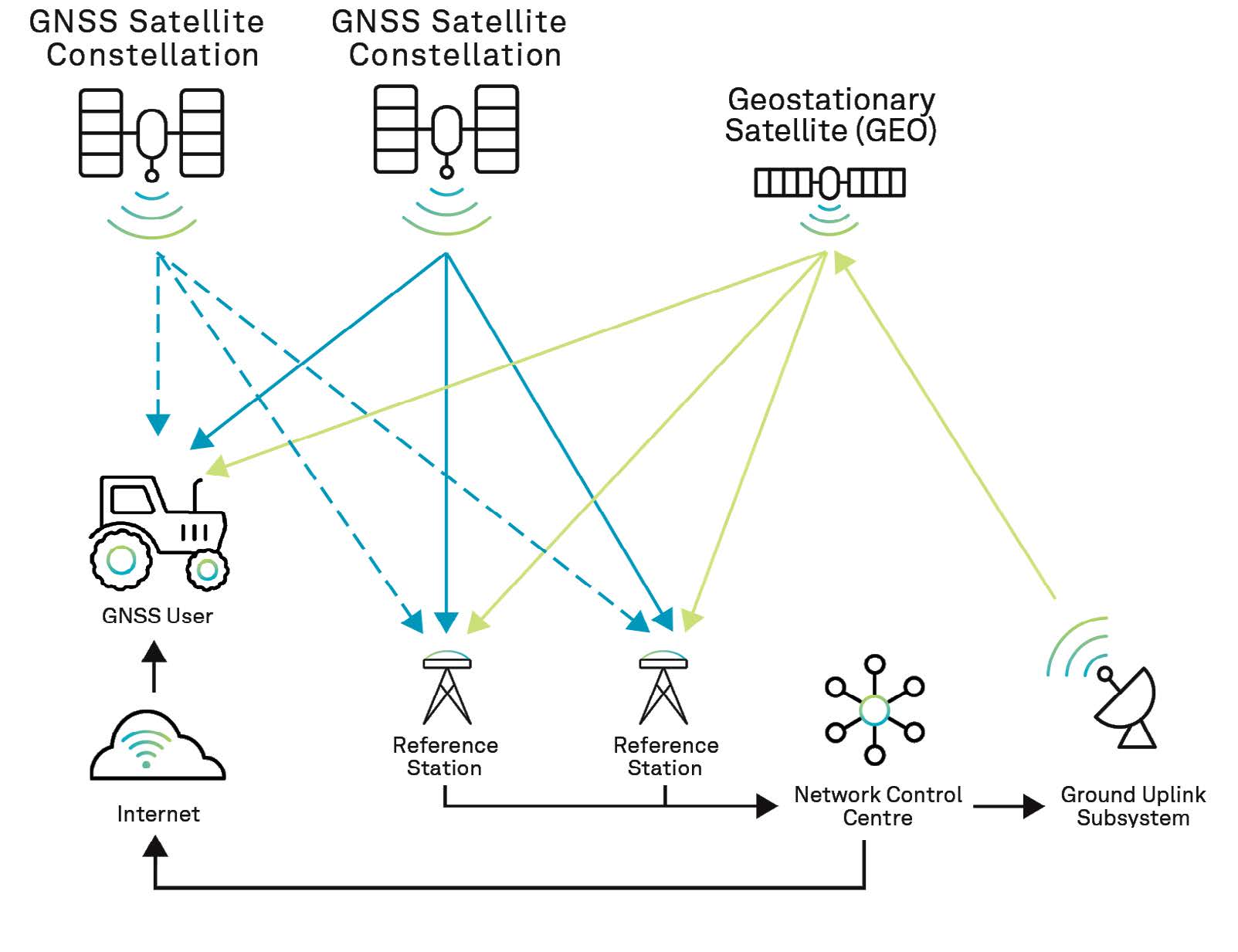AGRICULTURE
PPP is a positioning technique that removes or models GNSS errors to provide a high level of position accuracy from a single receiver. A PPP solution depends on a set of corrections generated from a network of global reference stations. Once the corrections are calculated, they are delivered to the end-user via satellite or over the Internet. These corrections are used by the receiver to improve position accuracy.
A typical PPP solution requires a period of time to converge to full accuracy in order to resolve any local errors such as atmospheric errors, multipath and receiver biases. The actual accuracy achieved and the convergence time required is dependent on the quality of the corrections and how they are applied in the receiver. Up to 2.5 cm (0.98 inch) accuracy in one minute is possible with advanced corrections and receiver technology.
Similar in structure to an SBAS, a PPP system provides corrections to a receiver to increase position accuracy. However, PPP systems typically provide a greater level of accuracy and charge a fee to access the corrections. PPP systems also allow a single correction stream to be used worldwide, while SBASs are regional. A typical PPP system is shown in Figure 44.

The error sources impacting PPP are mitigated by modelling, estimating and applying external corrections.
Some phenomena are predictable and can be modelled by well-established scientific models. The phenomena that can be well-modelled include the solid Earth tides, antenna phase wind-up and the dry part of the tropospheric delay. The wet part of the tropospheric delay — for example, local humidity levels — can also be modelled, but since it is highly variable, the modelling error must also be estimated.
Unknown components of the system are estimated using conventional estimation strategies. In addition to estimating the receiver’s position, many parameters must also be estimated. These include the ionosphere delay, the residual troposphere delay, receiver biases and the carrier phase ambiguities.
PPP correction providers deliver corrections to account for satellite clock, orbit and biases. In some regions, atmospheric corrections can also be provided in the correction stream. The corrections are typically delivered by satellite or via an Internet connection.
PPP service providers operate a network of ground reference stations to collect correction data for the different signals broadcast by each satellite. The corrections calculated from this data are broadcast from geostationary satellites to the receivers of subscribed users.